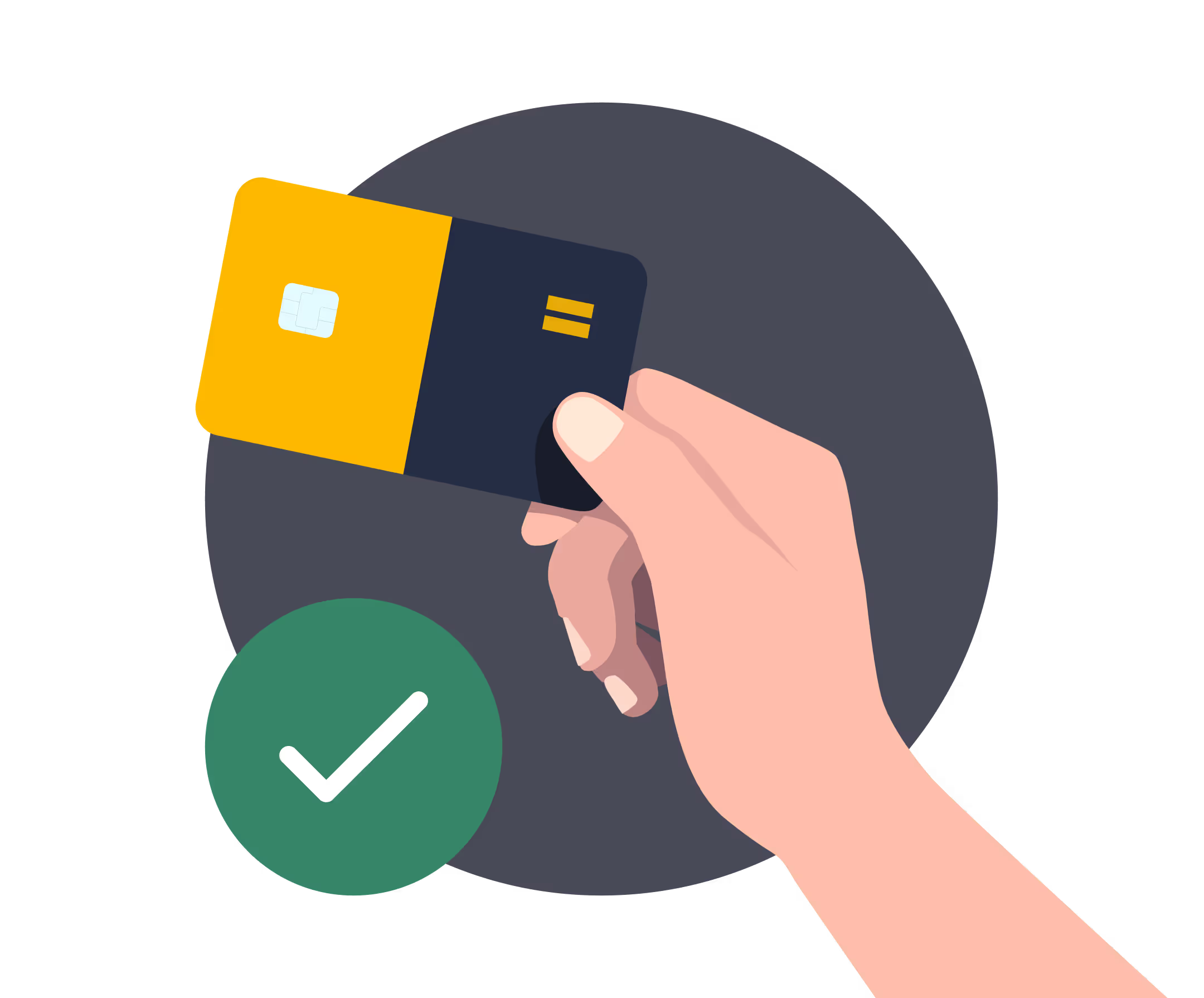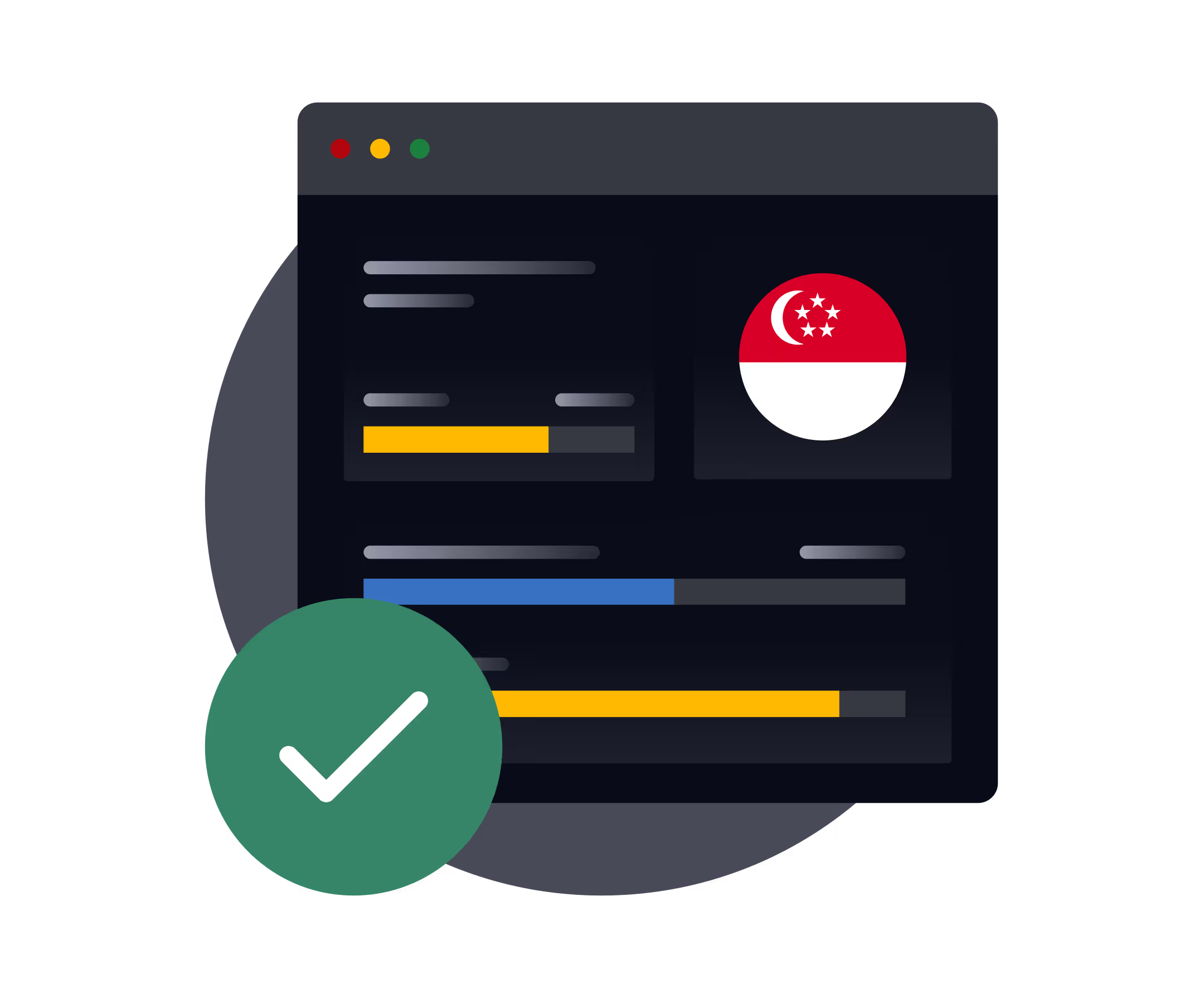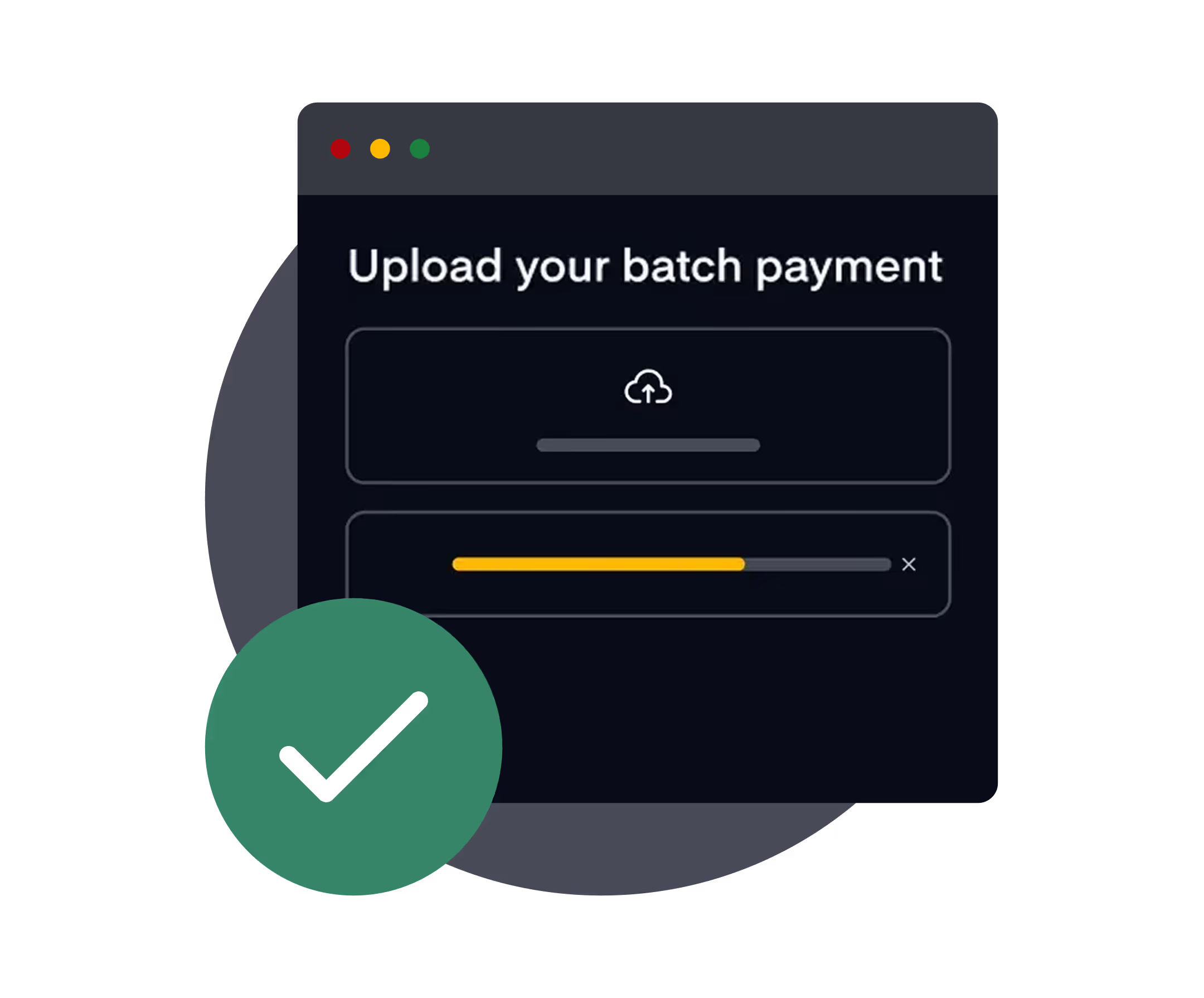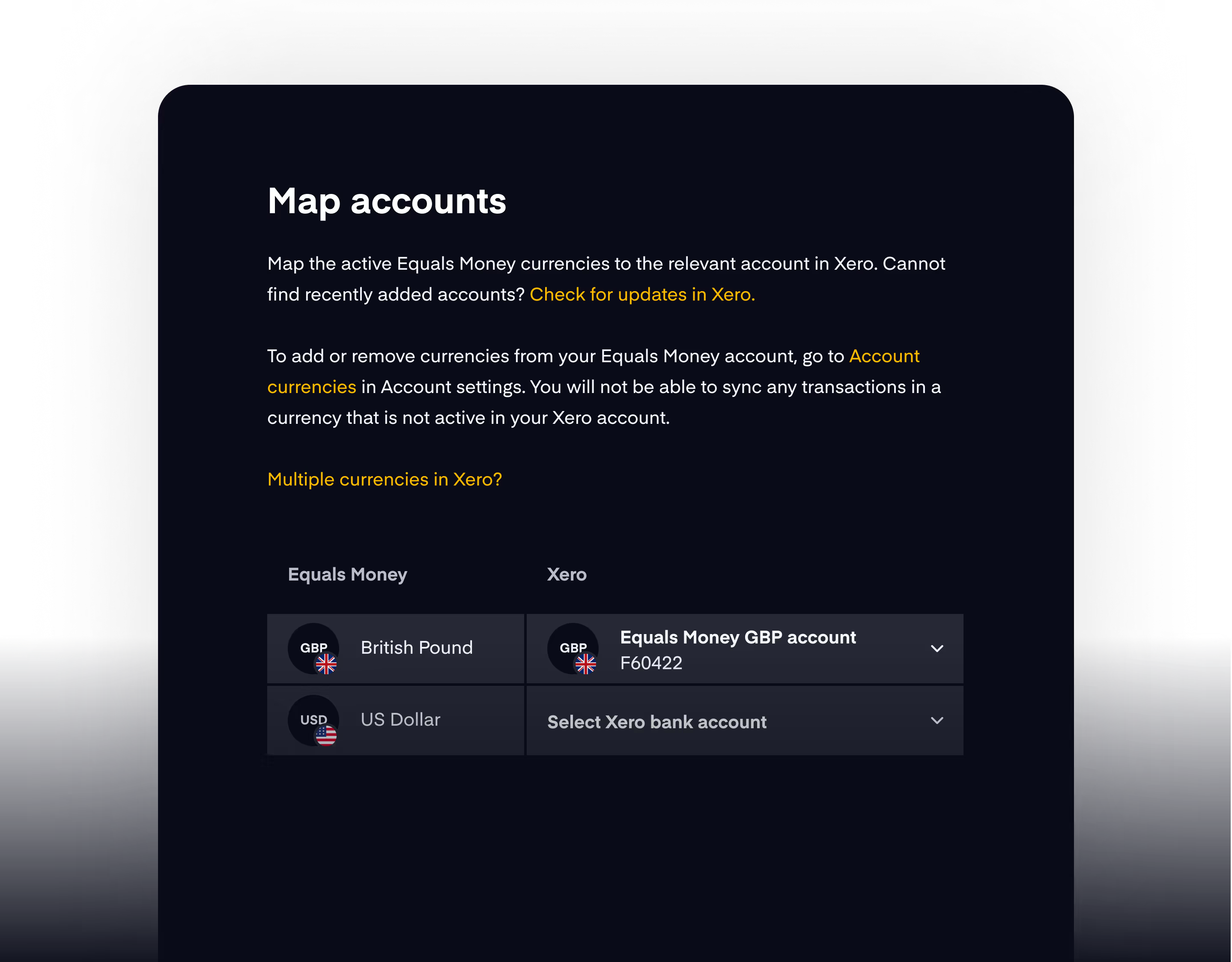SGD
The Singapore dollar (SGD) is more than just the official currency of Singapore, it's a trusted global currency with an important role in international finance and the foreign exchange (FX) market.
Thanks to Singapore’s status as a leading global financial hub, the Singapore dollar is widely used in regional trade, investment flows, and currency trading across Asia-Pacific and beyond. Its reputation for stability, backed by the prudent policies of the Monetary Authority of Singapore (MAS), makes the Singapore currency a preferred choice for businesses, investors, and forex traders seeking a resilient and reliable currency in an increasingly interconnected global economy.
Yes, you can make purchases in SGD using an Equals Money card.
Equals Money cards support 21 global currencies (including SGD), allowing you to make local currency purchases in Singapore. However, your card balance must include the required amount in SGD.

.png)
Yes, you can receive payments in SGD using an Equals Money account.
Equals Money accounts are equipped with a multi-currency IBAN, allowing you to receive payments and manage funds in 38 global currencies (including SGD), without the need for currency conversion.

Yes, you can make payments in SGD using an Equals Money account.
Equals Money allows outbound wire payments in 61 global currencies (including SGD). Read more on how to make an online payment here.
If you're an existing payments customer and do not have access to an online account, please speak to your account manager or get in touch with our team.

Yes, you can make bulk payments in SGD using an Equals Money account.
Equals Money allows bulk (batch) payments in 35 global currencies (including SGD).

Historical context of the Singapore dollar
The history of the Singapore dollar reflects the city-state’s journey from a former British colony to an independent economic powerhouse.
Before independence, Singapore used the Malaya and British Borneo dollar as part of a common currency arrangement with Malaysia, Brunei, and North Borneo. However, after gaining full independence in 1965, Singapore introduced the Singapore dollar in 1967 under the Currency Act, breaking away from the shared currency board to establish greater monetary control.
Initially, the Singapore dollar was pegged to British pound sterling and later to a basket of currencies, before moving to its current managed float regime. This system allows the Monetary Authority of Singapore (MAS) to maintain the SGD within an undisclosed policy band, ensuring that the Singapore currency remains resilient and competitive amidst global economic shifts. This approach has been key to Singapore’s reputation for sound fiscal management and sustainable growth.
Central bank
The Singapore dollar is issued, regulated, and managed by the Monetary Authority of Singapore (MAS), the country’s central bank and integrated financial regulator.
Established in 1971, MAS combines the functions of a central bank and a financial supervisory authority. It formulates Singapore’s monetary policy, supervises the banking and insurance sectors, develops the country’s financial markets, and safeguards the value of the Singapore currency.
MAS uses a unique exchange rate-based monetary policy instead of an interest-rate target, actively managing the SGD’s exchange rates to control imported inflation and maintain economic stability.
What is exchange rate-based monetary policy?
Unlike many countries that use interest rates as their main monetary policy tool, the MAS manages the Singapore dollar (SGD) using an exchange rate-based monetary policy.
Instead of targeting a specific interest rate, MAS focuses on keeping the Singapore currency stable and competitive by managing its exchange rate against a basket of other key trading partner currencies.
MAS allows the SGD to float within an undisclosed policy band (called the Singapore Dollar Nominal Effective Exchange Rate (S$NEER)) which is periodically reviewed and adjusted based on economic conditions. By guiding the SGD within this band, MAS controls imported inflation and supports economic growth, since Singapore is a small, highly open economy that imports nearly all its goods and services.
This unique approach means that instead of setting domestic interest rates, MAS intervenes in the foreign exchange market to strengthen or weaken the Singapore dollar as needed to maintain price stability and sustain the country’s export competitiveness.
The central bank’s exchange rate-centred framework and transparent policies have helped the Singapore dollar earn its reputation as a safe and dependable currency in the region.
Do other currencies use a exchange rate-based monetary policy?
Only a few economies still rely primarily on an exchange rate-based monetary policy similar to Singapore’s. It’s quite unique in today’s world because most central banks mainly use interest rate targeting. Here are some other examples:
1. Hong Kong dollar (HKD) — Hong Kong uses a currency board system, which is a strict form of exchange rate-based policy. The Hong Kong dollar is pegged to the US dollar within a narrow band (HK$7.75–HK$7.85 per USD). The Hong Kong Monetary Authority (HKMA) automatically intervenes to maintain this peg, and interest rates adjust accordingly.
2. Danish krone (DKK) — Denmark uses a fixed exchange rate policy through its participation in the European Exchange Rate Mechanism II (ERM II). The Danish krone is pegged closely to the euro, and the Danish central bank intervenes in currency markets to keep the DKK within a very tight band.
3. Brunei dollar (BND) — Brunei has a Currency Interchangeability Agreement with Singapore, meaning the Brunei dollar is pegged 1:1 to the Singapore dollar. Both currencies are legal tender in each country, and the Monetary Authority of Brunei Darussalam adjusts its currency supply to maintain this parity.
Official name and common nicknames
The official name is simply Singapore dollar, but locals and forex traders alike often refer to it casually as the “Sing dollar” or by its ISO code.
In everyday conversation, Singaporeans usually just say “dollars” or “bucks.” On trading floors and in forex circles, traders might call it the Sing or Sing dollar to distinguish it from other dollar currencies. These informal nicknames highlight the currency’s reputation for stability and its popularity in regional trading.
ISO code
The ISO currency code SGD is the internationally recognised three-letter currency code for the Singapore dollar.
This code is used globally in international transfers, banking, e-commerce, and financial data reporting. Whenever you check exchange rates, convert currencies online, or conduct international money transfers, you’ll see SGD listed to represent the Singapore currency.
The use of an ISO code ensures standardisation and avoids ambiguity in financial systems and cross-border payments, which is crucial for a major trading nation like Singapore.
Currency symbol
The Singapore dollar uses the symbol S$ to differentiate it from other dollar-based currencies like the US dollar and Australian dollar.
When writing amounts, locals and businesses usually place the S$ symbol before the numerical value (for example, S$50 for fifty Singapore dollars).
This simple but important distinction helps prevent confusion in international transactions, where multiple currencies share the generic “dollar” name.
Denominations
SGD is issued in a variety of practical denominations to facilitate daily transactions.
The current series of banknotes includes denominations of S$2, S$5, S$10, S$50, S$100, S$1,000, and S$10,000, although the largest notes are mainly used for large-value settlements and interbank transactions.
Coins in circulation come in 5 cents, 10 cents, 20 cents, 50 cents, and S$1 denominations.
Currency subunit
Like many modern currencies, the Singapore dollar is divided into 100 cents, making it easy for both locals and visitors to handle small transactions and calculate change.
While low-denomination coins such as 1 cent have been withdrawn from circulation, prices in Singapore are still typically displayed to the nearest cent. For cash payments, final bills are rounded to the nearest five cents.
This simple decimal system aligns the Singapore currency with global monetary standards, streamlining trade and tourism.
Common SGD forex trading pairs
The Singapore dollar is actively traded on global forex markets, especially among traders and businesses with exposure to Southeast Asia.
The most popular forex pair is USD/SGD (US dollar/ Singapore dollar), with other widely traded pairs including SGD/JPY (Singapore dollar/ Japanese yen) and EUR/SGD (euro/ Singapore dollar).
Due to Singapore’s position as a major global trading port and financial centre, SGD pairs are commonly used for hedging, investment diversification, and speculation. The Singapore currency’s liquidity and the Monetary Authority of Singapore’s steady exchange rate policy make it an attractive option for traders seeking relatively low volatility compared to other emerging market currencies.
















